Review for Sammy Going South
Released in the US as 'A Boy Ten Feet Tall', 'Sammy Going South' is another of those films that, for some, will be of considerable importance. As a children's film full of tragedy, darkness and (eventually) hope, it ranks alongside potent kids classics like 'Whistle Down the Wind' or 'Oliver' for its incredible effect on its legions of fans, most of whom will have been born at the fag end of the 1950's. Unreleased on DVD until now, those who have scoured EBay for overpriced off-air recordings can at last re-visit the film to see if it is as potent and powerful a journey as recalled, when seen through the eyes of an adult.
What struck me about seeing this barely remembered film again after many years, and only the haziest recollection of it, was just how dark it was. It seems almost relentlessly cruel, and there are many moments in the film where there is a deliberate but unspoken possibility that not all those who help Sammy on his quest have the best intentions. His journey across the desert, for example, is almost unbearably cruel. As an adult viewing the film, I was suddenly aware of a dark frisson that pulls into question the motives of his guide. There is a moment where the man offers Sammy a head-dress, rather like a ladies and suggests he wears it. The assumption is that he is helping Sammy to protect himself from the ravages of the sun, and that was probably the intent, but I am in no doubt that Director Sandy MacKendrick had intended to add this level of ambiguity which gives the film a queasy sense of unease from the outset. You're never quite sure of what is going on, or even of character's motives.
But I am clearly ahead of myself. I haven't even told you what the film is about yet.
The movie starts somewhere in tumultuous North Africa where his parents are part of the 'collateral damage' following a port invasion and Sammy finds himself suddenly horribly alone.
So Sammy sets out to find a distant relative, mentioned by his Mother before the attack, who resides in SA, some 5000 miles across the desert in Durban.
Somehow he manages to escape from the bullying clutches of some local lads and then sets out on his impossible journey, soon attaching himself to a nomad guide who takes him part way before succumbing to a dreadful accident which at first blinds him and then kills him. He staggers amongst the tourist section of some ancient monuments at the edge of the desert and is 'rescued' by a wealthy tourist (Constance Cummings). With no wish to be returned back to Port Said, Sammy soon befriends an old diamond smuggler (Edward G Robinson), a curmudgeonus cynic who at first seems an unlikely benefactor for Sammy but who gets on with him famously. At one point Sammy even rescues the old man's life, showing how quickly Sammy has grown up from the timid ten year old that set off on then journey originally. Sammy is eventually reunited with his Aunt and discovers that the old man has left him everything.
It's all frighteningly serious with little if any of Kendrick's trademark humour (Whiskey Galore!, The Man in White Suit and The Ladykillers for example) and is a film sometimes seen as typical of his later films like 'A High Wind in Jamaica' and 'Mandy'.
Whilst many in the film are a little earnest to be taken seriously (Harry H Corbett for one), Edward G Robinson and the boy (Fergus McLelland) were quite brilliant in their respective roles.
The picture quality is fine, if a little grainy and the mono audio is adequate.
Extra features include an interview with Sammy (Fergus McLelland), who has growed up nicely and is making a living doing corporate voice-training.
There's also a brief interview with James Mangold, a colleague and friend of Director Alexander Mackendrick's.
Certainly a movie worth a punt if you remember this with any degree of nostalgia. I wonder if its original potency will still have an effect after all these years, I suspect it will.
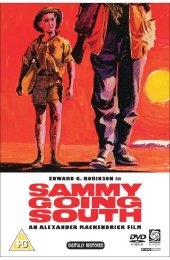
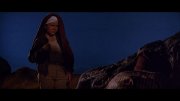


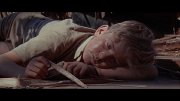
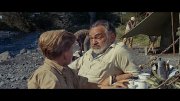
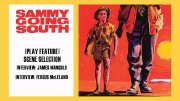


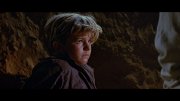
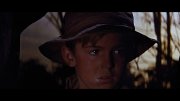

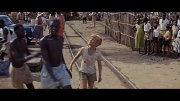















































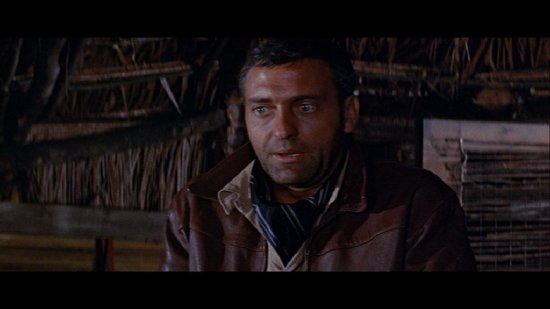



Your Opinions and Comments
However, two small parts of the supposedly cut scenes did make it to the final release print. In one, the Syrian is kneeling before the standing Sammy and is quite plainly and excitedly ogling the front of Sammy's khaki bush shorts, before feeling Sammy's right leg and grabbing hold of Sammy's right wrist and trying to drag the boy down onto the sand with him, while Sammy wriggles free from his grasp. The impression is given that Sammy knows what the Syrian wants them to do together, but that he isn't game for it. In the second scene, left in the film, the Syrian looks longingly at Sammy and then covers the bottom half of Sammy's face with the bottom of the boy's head dress and says something softly to him in Arabic, at which point Sammy stands up and shouts at him.
According to Fergus McClelland, Sandy Mackendrick would go over a scene with him before filming it and discuss the situation Sammy was in and tell him what, in his opinion, Sammy would be feeling at that particular point and then Fergus would act it out in front of the camera. This being the case, it's not hard to imagine, regarding the Sammy and the Syrian scenes, Mackendrick discussing with Fergus the fact that at this point, Sammy has just lost his home and his parents and all those Egyptians he believed were his friends and he is very upset and still in shock when he is found by the Syrian. Because of this, how would Sammy react when the Syrian made advances towards him? Quite possibly by letting the Syrian know in no uncertain terms that he wanted none of it and this is the way Fergus played the scenes.
It's doubtful that cinema audiences in 1963 would have read anything into these scenes as they watched them back then...although I certainly did when I ran the film as a sixteen years old in those days. It's quite clear that Mackendrick was trying to show with these scenes that the dangers Sammy faced on his trek south came from more than just scorpions; snakes and lions.
I understand that the DVD release will contain the 119 minutes cut (114 minutes at PAL running speed), as the original 129 minutes release version couldn't be found by Optimum even after an extensive search. I, of course, ran the complete version in 1963 and as far as I remember, the Sammy and the Syrian scenes were a lot longer in the full version than in the edited version that has been shown on television in the UK and from which I understand the new DVD release has been taken.
Interesting clarification of the subject matter, thanks!
See if that helps.